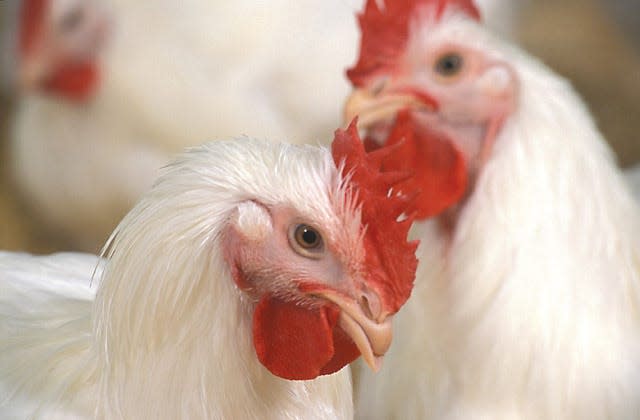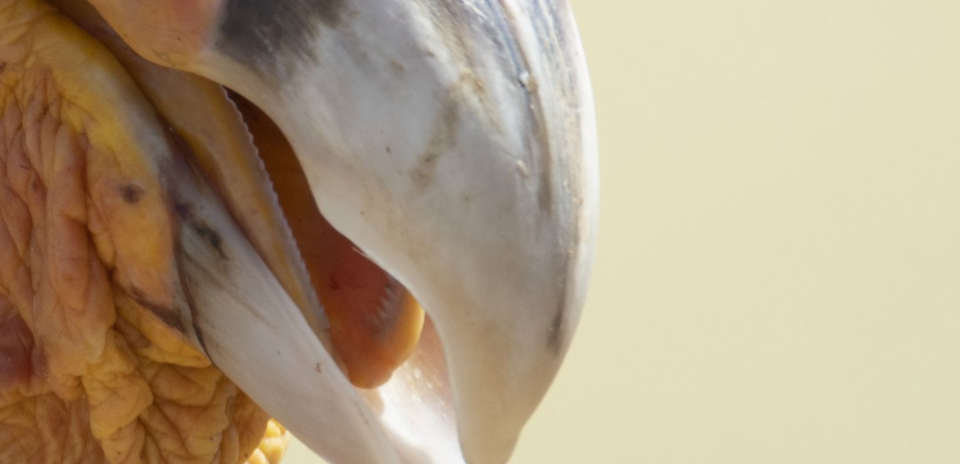From chickens to foxes, here's how bird flu is spreading across the US
A bird flu outbreak that has infiltrated six continents and is wreaking havoc in U.S. farms is among a group of avian influenza flu viruses first described in Italy in 1878 as a "fowl plague."
This outbreak, from a strain that emerged among poultry flocks and wild birds in Europe in the fall of 2020, has been the most pervasive in the U.S. and Europe. Once the highly contagious strain – H5N1 – was identified, it quickly began spreading across Europe and into Africa, the Middle East and Asia. By October 2022, it had been declared the largest avian flu epidemic ever in Europe.
As it spread around the world, it forced the deaths of tens of millions of chickens and turkeys and has killed or sickened thousands of birds, as well as land-based mammals and marine mammals. For now, the risk to people remains low, but the longer it lingers, researchers say, the risk increases that it could evolve into a virus that has greater impact on human health.
Here are some of the key events in the transmission and spread of the virus.
May – July 2021
Wild fox kits at a rehabilitation center in the Netherlands test positive for the virus during an outbreak in wild birds.
Virus found in great skuas – a type of seabird – on Fair Isle, Scotland.
November – December 2021
H5N1 first detected in North America, in poultry and in a great black-backed gull in Newfoundland and Labrador, Canada.
Four ducks harvested by hunters North and South Carolina test positive for the virus, the first bird flu infection among wild birds in the U.S. since 2016.
January – February 2022
An avian flu infection is reported in an 80-year-old man in England, with no symptoms who raised ducks that became sick in late December.
On Feb. 9, 2022, an outbreak was reported among turkeys at a U.S. commercial poultry facility.
Poultry outbreaks occurring worldwide.
Sea lions dying in Peru test positive for the virus
Virus detections begin occurring at other commercial poultry facilities in the U.S.

April – September 2022
U.S. reports first human case, possibly the result of contamination of the nasal passages rather than actual infection in a worker culling chickens on a Colorado farm.
Egg prices jump as thousands of chickens euthanized after they are infected with bird flu.
Virus found in at least 88 mammals in the U.S. , including harbor seals, red foxes, skunks and a bottlenose dolphin. Similar detections occurring in Europe and Japan.
Fall 2022
Virus reported in more than two dozen mammals, including a black bear and Kodiak bear in Alaska, and in grizzly bears in Montana and Nebraska, and in a mountain lion.
Two poultry workers in Spain diagnosed with the virus.
2023
Bird flu spillover into mammals continues. Several human cases reported internationally.
By February, more than 50 million chickens have been affected in the U.S., in what has become one of the largest bird flu outbreaks in recorded history.
Study finds bird flu killing many bald eagles.
In April, wildlife officials report California condors die at alarming rate.
In December, the first detections are reported in both polar regions. A dead polar bear in Alaska tests positive for the virus, a first for polar bears and for the Arctic. Virus also found in elephant and fur seals in the Antarctic.

March – April 2024
Viral infections occur for the first time in juvenile goats on a Minnesota farm where a poultry flock tested positive.
Virus found for the first time in dairy cows, at farms in Kansas and Texas. Later research suggests it was circulating since December, likely after introduction by a wild bird to a Texas cattle farm.
Virus found in unpasteurized clinical samples of milk at two Kansas dairy farms and one in Texas.
Fragments of the virus found in pasteurized milk, but aren't considered dangerous.
A farm worker in Texas tests positive for the virus, with conjunctivitis but not a respiratory infection, after coming into close contact with infected cows. It's the second human case in the U.S. and the first reported cow-to-human spread of H5N1 bird flu.
May 2024
Michigan dairy farm worker tests positive for the virus, with conjunctivitis symptoms.
Infection reported in another farm worker in the U.S., and this time the patient has respiratory symptoms, which healthcare researchers find more concerning. It's the fourth reported human case, the third by exposure to dairy cows.
This article originally appeared on USA TODAY: Bird flu in the US: A full timeline
